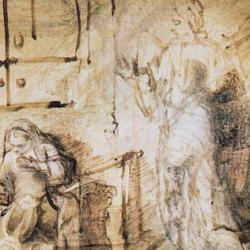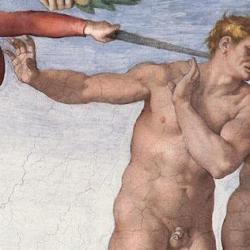A number of my students did papers on the robe motif in the Joseph narrative and came up with some fresh (to me) thoughts. Here are a few of them.
1. At the beginning of the Joseph narrative, Jacob the faterh bestows a robe on his favored son, Joseph. At the end of the narrative, Joseph, now elevated to the position next to Pharaoh, bestows robes on his estranged and reconciled brothers. Benjamin particularly is singled out, receiving five changes of clothing from Joseph. In addition to the neat literary symmetry here, there’s also a Trinitarian hint: The Father elevates His Son among His brothers, so that the Son can later elevate His brothers; the Father gives the glory of His Spirit to the Son so that the Son, dead and exalted, can clothe His brothers in the same Spirit.
2. When Reuben finds that Joseph is no longer in the pit, he tears his garments; Jacob does the same when he thinks Joseph is dead. None of the other brothers express grief at Joseph’s “death.” Later, when Benjamin is caught with Joseph’s cup in his sack, they all tear their clothes (44:13). Not only Judah, but all the brothers have changed, their consciences softened.
3. When Jacob blesses Judah, he says that he “washes his garments in wine, and his robes in the blood of grapes” (49:11). That connects back to Joseph’s original robe, dipped in the blood of a goat to serve as evidence of Joseph’s death. Judah too will be betrayed by brothers. But the image is mainly positive. Wine is kingly, and a robe washed in wine is royal. Several students point out that a robe washed in wine doesn’t come out white (cf. Revelation 7:14) but purple, a royal color. By washing garments in blood-wine, Judah becomes a royal tribe.















